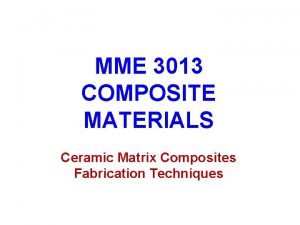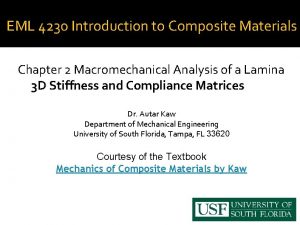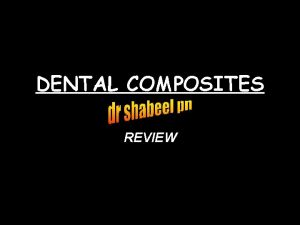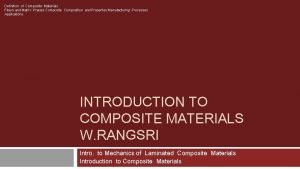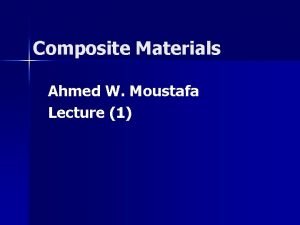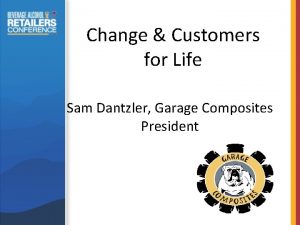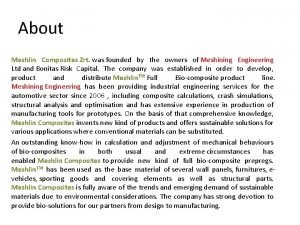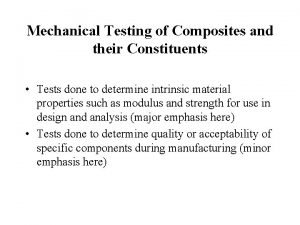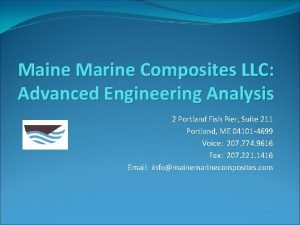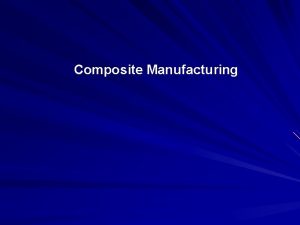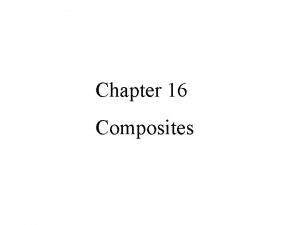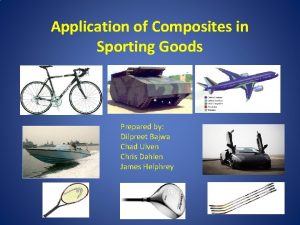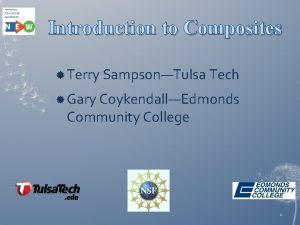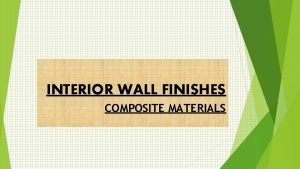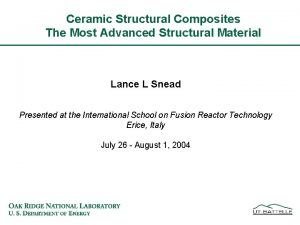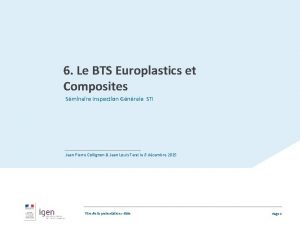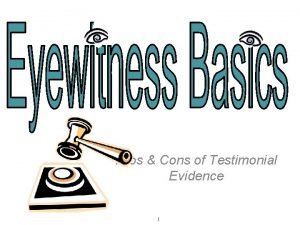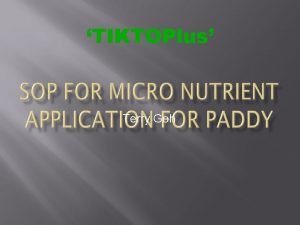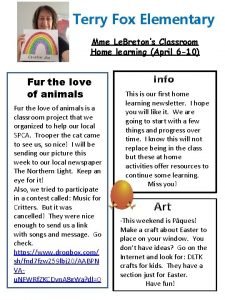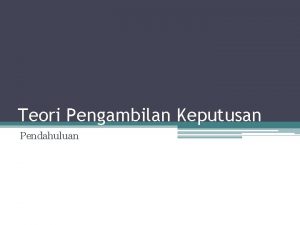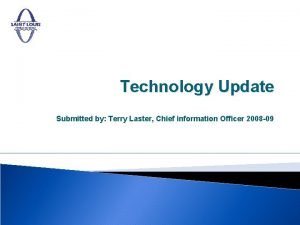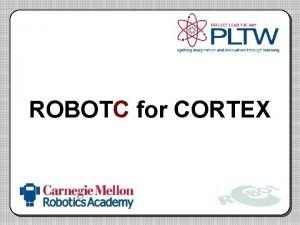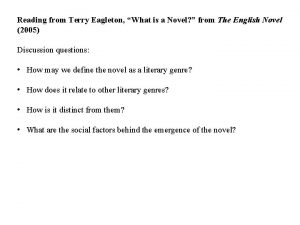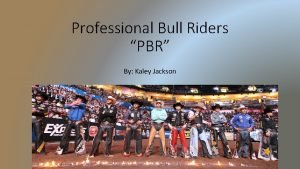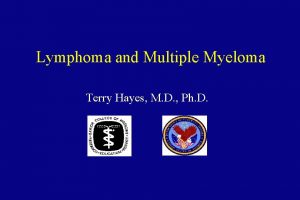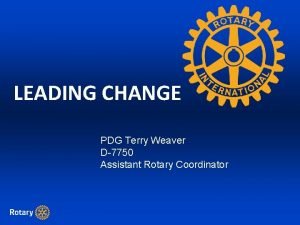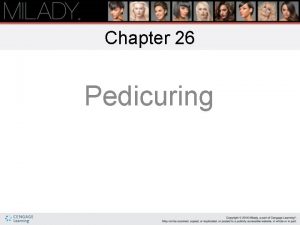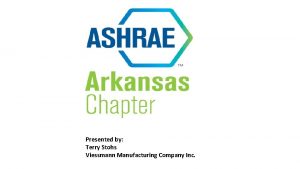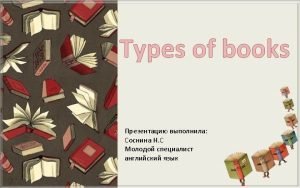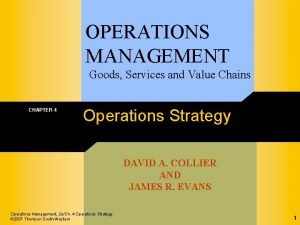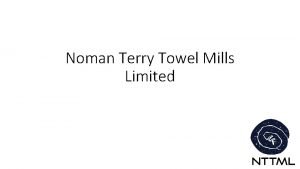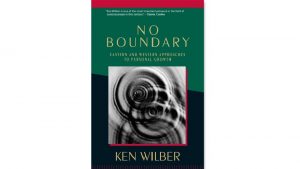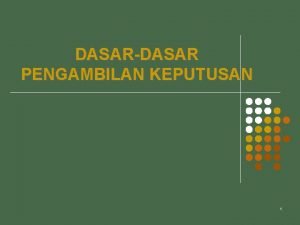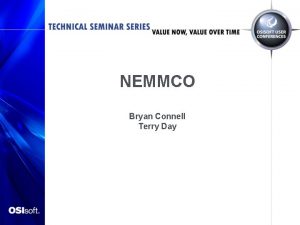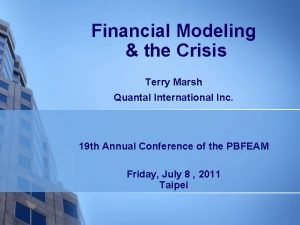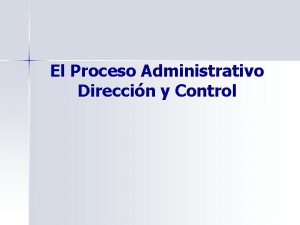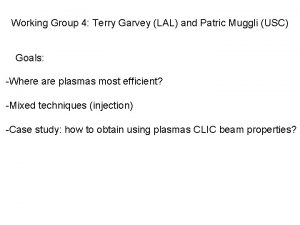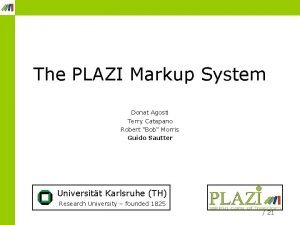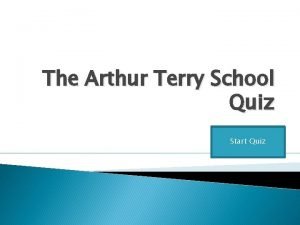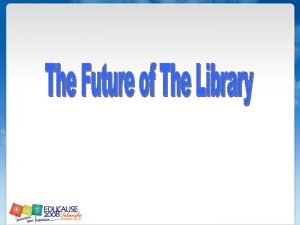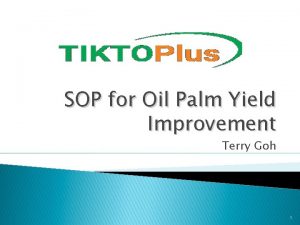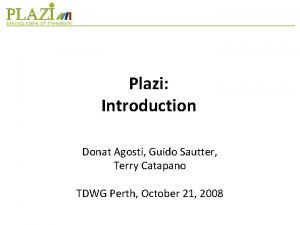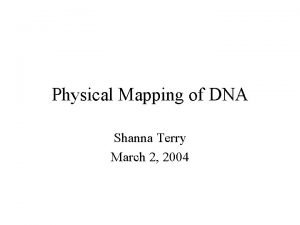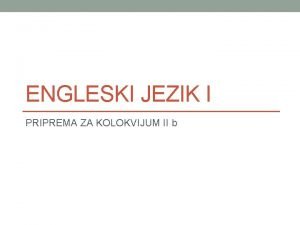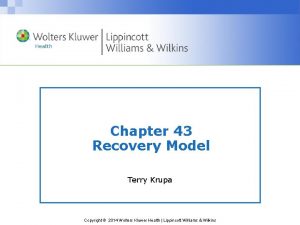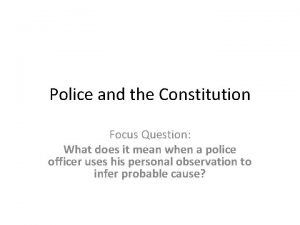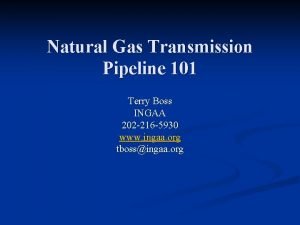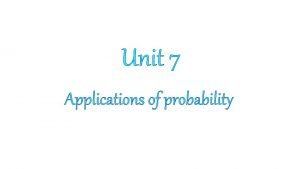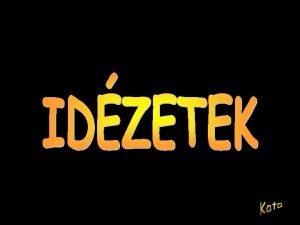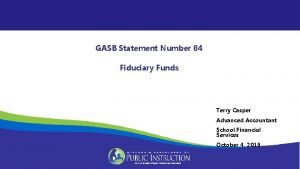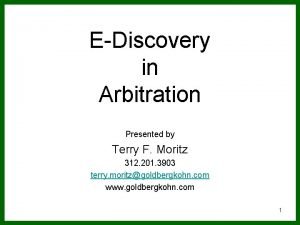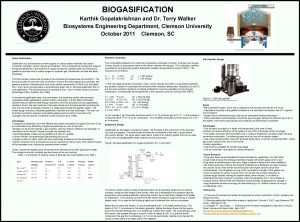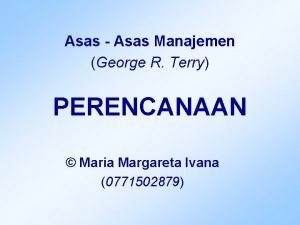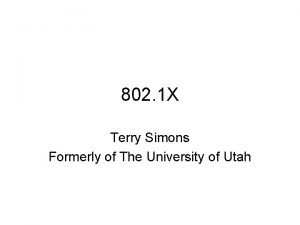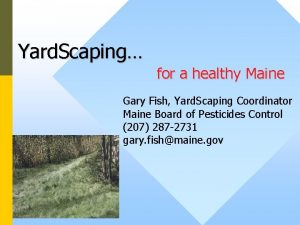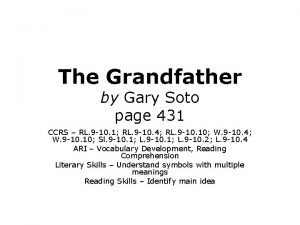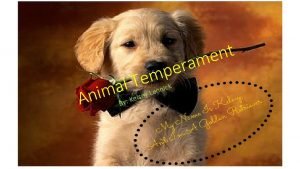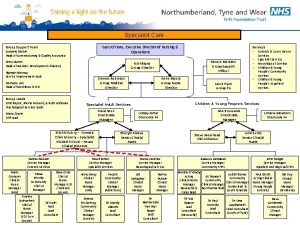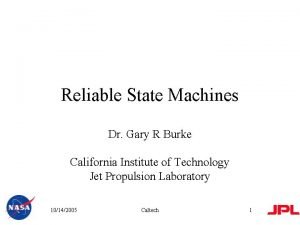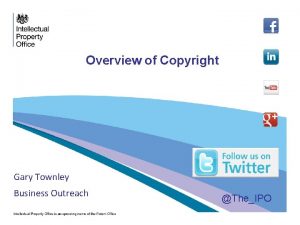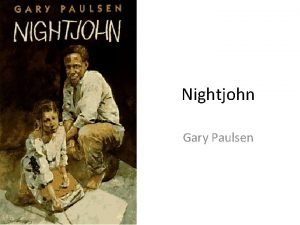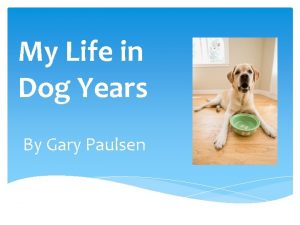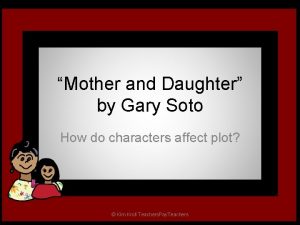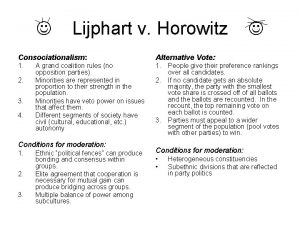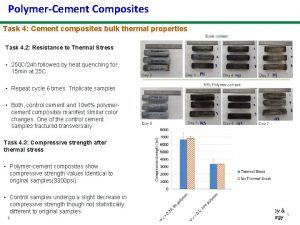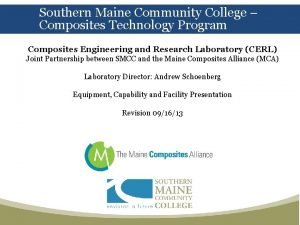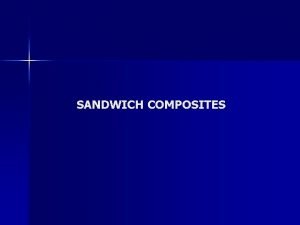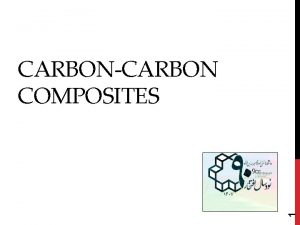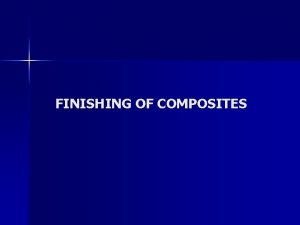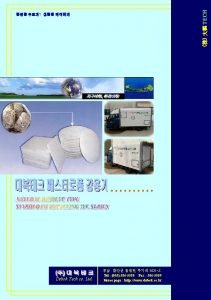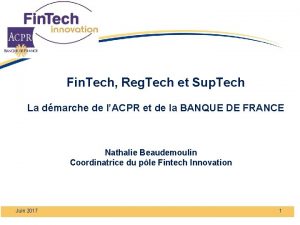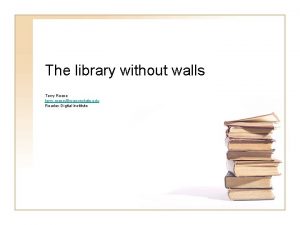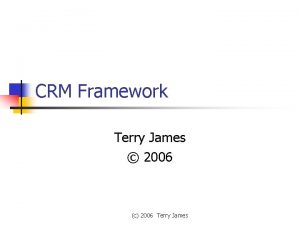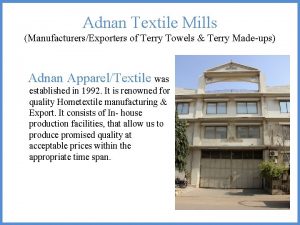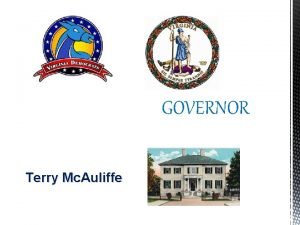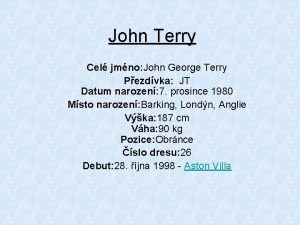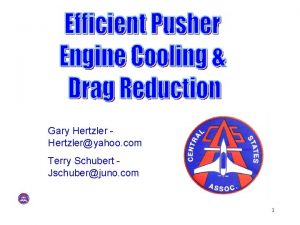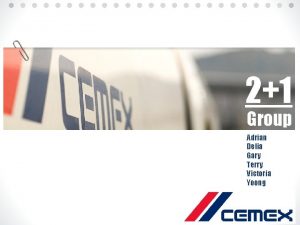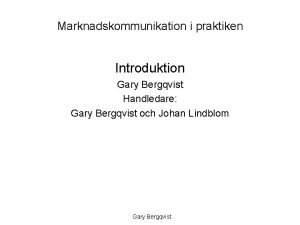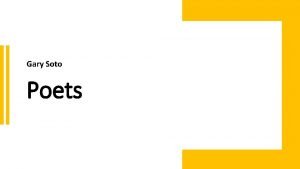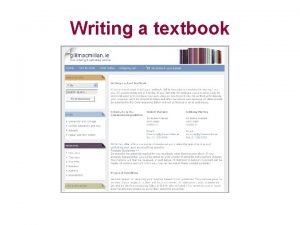Introduction to Composites Terry SampsonTulsa Tech Gary CoykendallEdmonds













































































































- Slides: 109

Introduction to Composites Terry Sampson—Tulsa Tech Gary Coykendall—Edmonds Community College 1

Boeing 787 “Dreamliner” 2

Composite What is a composite? 3

DEFINITIONS A. 1 st - THE BONDING TOGETHER OF TWO OR MORE MATERIALS TO FORM A THIRD THAT IS STRONGER THAN THE INDIVIDUAL COMPONENTS. NOTE; SIMPLE EXAMPLES • CONCRETE • BRICKS 4

DEFINITIONS B. 2 nd - A COMBINATION OF DISTINCT MATERIALS IN WHICH TWO OR MORE STRUCTURALLY (COMPLIMENTARY) SUBSTANCES AND POLYMERS (GLUE) COMBINE TO PRODUCE SOME STRUCTURAL OR FUNCTIONAL PROPERTIES NOT PRESENT IN ANY OF THE INDIVIDUAL COMPONENTS 5

HISTORY Fiberglass – 1940’s B. Boron - 1966 C. Carbon – 1968 D. Aramid Fiber – 1972 E. The first Boeing 707 had approximately 2% composites. F. The Boeing 767 has approximately 35% composites G. Beech Starship is the first certified general aviation composite aircraft. ( Some think it was the Windecker “Eagle”) H. Bell-Boeing V-22 tilt rotor aircraft is also entirely composite. A. 6

ADVANTAGES OF COMPOSITES A. Less weight. B. Smoother outer surfaces. C. Good sonic dampening at high frequency. D. Less corrosion. E. Lower maintenance costs. F. High strength-to-weight ratio. G. Thinner materials. H. Longer Life. 7

DISADVANTAGES OF COMPOSITES A. Chemical resistance. H. Poor electrical conductivity. B. Temperature resistance. I. Moisture in the cells. C. Rain erosion. D. Initial Cost. E. Inspection. F. Fire/Smoke/ & Toxicity. G. Galvanic corrosion. 8

TYPES OF AIRCRAFT COMPOSITES A. There are two types First 1. Solid Laminate / Monolithic a. Definition - Two or more layers of cloth bonded together with an adhesive. 9

WARP CLOCK, CHART Orientation Coordinate System v WARP CLOCK, CHART - points which direction the WARP of the fabric is placed. q 0 degrees q +45 degrees q -45 degrees q 90 degrees. -450 900 +450 00 10

WARP TERMS (cloth & lay-ups) q TAPE, UNIDIRECTIONAL, WARP q BI-DIRECTIONAL, WARP q MULTI-DIRECTIONAL, WARP 11

Fabric Terms Warp Fill Bias Weave Selvage Edge 12

(Aramid) 13

PRIMARY STRENGTH q THIS IS FROM THE FIBERS HELD UNDER TENSION BY THE RESIN (ADHESIVE). q IMPORTANT TO KEEP THE FIBERS STRAIGHT WHEN LAYING OUT. 14

TYPES OF AIRCRAFT COMPOSITES 2. Second type: Sandwich Construction a. DEFINITION: Consists of a core material with two faces bonded to it. The faces can be metal or fabric 15

TYPES OF AIRCRAFT COMPOSITES 16

Why do we use sandwich construction parts? 17

2. Sandwich Construction b. HOW SANDWICH STRENGTH VARIES AS THE OVERALL THICKNESS CHANGES. 1). BASE-LINE FACTOR q 4 LAYERS OF CLOTH WITH NO CORE q BASE OF “X” FACTOR 18

A. There are two types 2. Sandwich Construction 2) 2 X’s THICKER FOAM q 7 X’s STIFFER. q 3. 5 X’s STRONGER. q 3% HEAVIER. 19

A. There are two types 2. Sandwich Construction 3) 4 X’s THICKER FOAM q 37 X STIFFER. q 10 X’s STRONGER q 6% HEAVIER. 20

SANDWICH TYPE APPLICATIONS A. Aircraft Uses 1. Radomes 2. Floors. 3. Control Surfaces 4. Some wing panels. 5. Props 6. Helicopter rotor blades 21

BOEING 767 APPLICATIONS 22

23

24

Honeycomb Core Types B. 1. Terminology 25

Honeycomb Core Types B. 2. Core Configuration - Three basic Types HEXAGONAL TYPE 26

Honeycomb Core Types B. 2. Core Configuration - Three basic Types HEXAGONAL TYPE a. Most common cellular configuration. b. Can be constructed from metallic and non-metallic material. c. Does not want to take a curve. 27

Honeycomb Core Types B. 2. Core Configuration - Three basic Types OX-CORE 28

Honeycomb Core Types B. 2. Core Configuration - Three basic Types OX-CORE a. Over-expanded in the “W” direction. b. Will take a simple curve in the “L” direction. 29

B. Honeycomb Core Types 2. Core Configuration - Three basic Types FLEX-CORE 30

Honeycomb Core Types B. 2. Core Configuration - Three basic Types FLEX-CORE a. Formable in compound curvatures. 31

MANUFACTURING METHODS FOR ALUMINUM 32

Honeycomb Core Types B. 4. H. O. B. E. a. Honeycomb prior to expansion b. Used to make complex parts c. Pulled to size according to cell size. 33

Nomex Core C. 1. Made by Du. Pont 2. Impregnated paper type. 3. Dipped in resin a. Number of drippings = density 4. Fire resistant 5. Most common type of non-metallic core used in aircraft. 34

Thermocouple wires. (TCs) 35

Type: J wire *Red wire: negative, larger size, on bottom *White wire: positive, smaller size *weld, twist, or both? 36

37

Fabric terms 38

1. Filament This is the basic structural element. 39

2. Strand A strand is composed of filaments. For fiber glass, you may have from 51 to 1624 filaments. 40

3. Yarn A small continuous bundle of filaments. Twisted together 41

Tow A tow is the same as a yarn, except not twisted. 42

4. Tape Unidirectional tape. All flat parallel tows. Most common as a prepreg. 43

5. Mat Sheets of chopped or continuous strands of fibers held together with an adhesive binder 44

FABRIC WEAVE PATTERNS Plain Weave A. 1. 2. This is the most simple weave pattern, with each strand going alternately over and under the crossing strands. Pattern – over one strand, under the next strand…… 45

Basket Weave B. 1. The basket weave is similar to the plain weave, but it has two yarns next to each other. 46

Twill or Satin Weave C. 1. One yarn crosses over several yarns before going under a single yarn. 2. If it rides over two, it is a Twill. 3. If over three or four, it is a Crowfoot 4. If over more than four, a Satin 5. 6. It is considered a Five-harness Satin if the strand goes over four and under one. An Eight-harness Satin, if the strand goes over seven and under one. TWILL SATIN 47

Terms used in lay-ups 1. Stacking 2. Nesting 3. Warp face up 4. Symmetrical 5. Balanced 48

TYPES OF FABRICS Fiberglass - Made from small strands of molten silica glass that are spun together and woven into a cloth. A. 1. Fiberglass is used to help reinforce plastics. 2. Silicon Oxide. 3. The fiber diameter is. 00015 -. 00051 49

What is fiberglass made of ? Soda ash sand limestone cullet Furnace 1300 - 1600 F. 50

TYPES OF FABRICS Fiberglass (cont. ) A. 5. Types a. S-Glass – Is produced from magnesia-aluminasilicate and is used where a very high tensile strength is needed. b. E-Glass – Also known as “electric glass” due it’s high resistivity to current flow. 51

TYPES OF FABRICS Fiberglass (cont. ) A. 8. Other types of Fiberglass a. VOLAN-A 1) This is a type of fiberglass cloth that has been treated with a special chromic chloride solution. q This increases the; * fabric strength * ease of saturation 52

Fiberglass (cont. ) A. 8. Other types of Fiberglass b. Special Types of Non-Structural Fiberglass 1) Mat Mold; Short strands of fiberglass slivers that are randomly packed together to for a cloth. q If replacing woven cloth with mat mold, make the part thicker than the original cloth. 2) Chopper Mold; This is sprayed through a chopper air gun which sprays both resin and finely chopped 53 fiberglass.

Kevlar (Aramid Fiber) B. 1. Types a. Kevlar 29 – Used on boats and sporting goods. b. Kevlar 149 – Used in bullet-proof vests. c. Kevlar 49 - Used on aircraft (yellow). KEVLAR 49 54

Kevlar (Aramid Fiber) B. 2. Advantages a. High tensile strength. b. Excellent vibration damping characteristics. c. UTS 525, 000 PSI or 525 KSI. d. Chemically resistant. e. Heat resistant f. High impact strength. g. Strength-weight ratio compared to other composite materials. 55

TYPES OF FABRICS Kevlar (Aramid Fiber) B. 3. Disadvantages a. Cost. b. Some epoxies will not bond with Kevlar. c. Hard to work with; 1) Need special tools to cut and drill. d. Fibers fuzzy when cut with improper tools e. Absorbs moisture. f. Wicking. Low modulus. 56

Kevlar (Aramid Fiber) B. 4. Weights or “Denier” a. Kevlar is only produced in one fiber size. b. Fibers are used to produce yarns of various weights. c. The term “denier” is defined as the weight in grams of 9000 meters of the strand. 1) Weights range from 195 denier to 7100 denier. d. The real origin lies in the fact that 9000 meters is the approximate length of a single strand of silk spun by a silk worm. e. All other products use the number of filaments in a strand. 57

Carbon or Graphite? Carbon fibers are typically carbonized at 2400 F and have 9395% Carbon content while graphite fibers are graphitized at 3450 -4500 F and have more than 99% carbon 58

X. TYPES OF FABRICS Graphite / Carbon C. 1. Constructed by subjecting rayon strands to high temperatures and high pressures. 2. The warp is marked 2 inches apart. 3. The fill is marked 6 inches apart. 4. Graphite is the most commonly used cloth on large aircraft today. 59

Graphite / Carbon C. 5. Precursors a. Polyacrylonitrile fiber (PAN) b. Pitch fiber, obtained directly from petroleum pitch of coal tar. 1) Strong and versatile carbon nanotubes are finding new applications in improving conventional polymer-based fibers and films. For example, composite fibers made from single-walled carbon nanotubes (SWNTs) and polyacrylonitrile – a carbon fiber precursor – are stronger, stiffer and shrink less than standard fibers. (SEE NEXT SLIDE) 60

Graphite / Carbon C. 6. Advantages a. High strength b. UTS – 500, 000 PSI or 500 KSI. c. It is stiff, yet it has excellent formability d. Cuts and machines easily. e. Has good impact strength. f. Has a very low expansion and contraction rate. 61

C. Graphite / Carbon 7. Disadvantages a. Cost. b. Not compatible with other metals such as aluminum alloy and steel. 1) Susceptible to galvanic action. c. Low expansion rate. d. Fasteners use titanium or SST. e. Insulator of fiberglass. 62

C. Graphite / Carbon 8. Fabric Style: 3 K-70 -P a. If the fabric style is 3 K-70 -P 1) 3 K = Tells how many filaments are contained in the tows the fabric is woven from. 2) 70 = Tells how thick the fabric is in ten thousandths of an inch. 3) P = Describes the fabric weave. 63

E. Ceramic 1. Used in high temperature applications extending up to 2, 0000 F. 2. Dissipates heat rapidly. 3. Used on the Space Shuttle. Heat-resistant ceramic tiles protect the Space Shuttle during re-entry into the atmosphere. 64 Photo courtesy National Aeronautics and Space Administration (NASA).

FABRIC TERMS A. Warp - The warp threads in a section of fabric run the length of the fabric as it comes off the roll. B. Fill – The wet/fill threads of the fabric run 900 to the warp threads. C. Selvage edge - It is the tightly woven edge parallel to the warp threads and prevents the fabric from unraveling. D. Bias – This is the fiber orientation which runs at a 450 angle to the warp threads. E. Uni-directional - The thread orientation of all the major fibers run in one direction. F. Bi-directional - The thread orientation calls for the threads to run in two or more directions. 65

66

PREPREGS Definition - Fabric that has been pre-impregnated with resin. A. 1. 2. 3. 4. Has to be cured under heat. Will not cure at ambient temperature. Cured to B-stage when manufactured. Must be stored in moisture proof bags. 1. Handling 1. Must be stored in a freezer at 00 F. , to prevent the resin from curing. 2. Shelf Life = typ. 1 year. 3. Out Life = typ. 300 hrs. 67

C. Advantages 1. Contains the proper amount of matrix 2. Never resin lean or resin rich. 3. Fibers are completely encapsulated with the matrix. 4. Eliminates manual weighing and mixing of the matrix D. Disadvantages 1. Handling – Storage (Labor/Cost). 2. Must keep excellent records of OUT LIFE 3. Cost – More expensive 68

Pre-impregnated fabric by dipping the woven fabric into a resin Solution containing the proper amount of resin and catalyst. 69

70

71

72

A. Terminology 1. RESIN a. Other names; 1) PART 1 2) PART A 73

A. Terminology 2. CATALYST a. Other names; 1) HARDENER 2) PART 2 3) PART B 4) ACTIVATOR 5) CURING AGENT 74

Terminology A. 3. SHELF LIFE a. Varies from brand to brand. a. Typically is one year a. Stated by the manufacture. 75

Terminology A. 4. POT LIFE a. Working life. b. THIS IS HOW LONG YOU HAVE TO USE THE ADHESIVE AFTER IT HAS BEEN MIXED. 76

Terminology A. 5. CURE TIME a. TIME IT TAKES FOR ADHESIVE TO REACH FULL STRENGTH. b. Not just dry to touch. 77

STAGES OF A MATRIX SYSTEM WORKING LIFE OR POT LIFE A. Ø This is when the resin and catalyst are first mixed. 78

STAGES OF A MATRIX SYSTEM B. “TACK” - Solidified to the point where is doesn’t move. 79

STAGES OF A MATRIX SYSTEM C. FULLY CURED 80

COLD BONDING A. Description - This is an adhesive that will cure at room temperature. B. Some cure times of cold bonding adhesives can be shortened by raising the room temperature. Ø Example; 24 hours at 720 F. or 2 hours at 1300 F. 81

What are they as it applies to bagging: Breathers Bleeders Parting films Perforated parting films 82

HOT BONDING A. These are resins that require elevated temperatures to cure. B. Sources of heat 1. 2. AIR OVEN – Operates on the principle of convection and provides a more uniform distribution of heat. INFRARED HEAT LAMPS - This is an older method that is still used today. (Lamps have improved today) 83

B. Sources of heat 3. AUTOCLAVES a. Pressure Chamber b. Gives us three operations at the same time; 1) HEAT 2) PRESSURE 3) VACUUM 4. HEAT BLANKETS a. Used with hot bonders b. Wattage; Per size in square inches. 84

ADHESIVE FILM A. Sheets of pure adhesive B. At stage B C. May or may not have scrim cloth in it. 85

VACUUM PRESSURE A. Conversion Formula 1. 29. 92” Hg. = 14. 73 PSI 86

EPOXY FILLERS MICRO – BALLOONS - Hollow micro-balls used to increase the volume and thickness (viscosity) of the adhesive. Lowers the density and strength. Types A. B. C. 1. Glass a. They are inert. b. Frosty Appearance. c. Not affected by humidity. 2. Phenolic a. Made of phenolic resin b. Dark tan to dark brown in color. 87

EPOXY FILLERS Other Fillers D. 1. FLOX (NOT A MICRO-BALLOON) a. Short strands of fiber b. Increases the strength of the epoxy. c. Types 1) 2) Cotton Fiberglass 88

POLYESTER RESIN A. This is a two-part system, not a four part system. B. Due to it’s weakness it is used on non-structural parts on aircraft. Contains a low viscosity D. Best impregnating resin. E. Used for fiberglass to fiberglass construction and repair. F. Good dielectric (radomes). G. Hardener 1. 2. Changing the amount, changes the cure time. MEKP 89

Let’s look at: 1. Filament winding 2. RTM 3. VIP 4. Pultrusion 90

Filament Winding 91

Pre-preg filament winding machine 92

RTM Mold, A and B side 93

VIP, small part 94

Pultrusion 95

Questions ? ? 96

Boeing 787 Case Study 97

Benefits of the 787 “Dreamliner 1. Light weight a. Fuel Efficient b. Longer range than comparable aircraft 2. Reduced maintenance costs a. $30 -40 million in saving b. High reduction in fatigue c. Highly corrosion resistant 98

Boeing 787 3. Increased passenger comfort a. Increase in cabin pressure b. Increased humidity 1. Result of high corrosion resistance c. Bigger windows due to increased strength d. Less Noise 1. Front engine cowl intake is made of a single piece of composite, reducing drag 4. Decreased assembly time a. Parts arrive from suppliers as net-shape b. Components are pre-installed in parts at supplier factory 99

Boeing 787 100

Boeing 787 101

102

Boeing 787 Cost-Benefit Analysis of Boeing 787 1. Boeing estimates that the 787 will consume $5 million less in fuel on a comparable route that the 767 a. Savings = Price of plane 2. Potentially longer life a. Not proven yet, but likely due to the high reduction in corrosion and fatigue 103

Boeing 787 Changes Boeing has Made in Order to Create a Composite Airplane 1. Composites are made elsewhere a. Attached in the factory using titanium hardware and adding carbon sheets where needed 2. Safety Equipment b. Revamped to provide protection from carbon dust 3. New machines and equipment a. Alignment machines to assemble tubes b. Needed to attach fuselage due to low flexibility of fuselage 104

The Future of Composites 105

Automotive Industry Ø Today it is easy to be optimistic about the future use of composite materials in the automotive industry • Substitution of metals with composites not unavoidable and automatic Ø Composite material applications will increase, but they will never completely replace metals Ø Composite materials have enormous potential • Industry will need to demonstrate advantages for each application and compete with advocates of metals • Designers should seek to work with both materials exploiting the best characteristics for a given application 106

Ø Nano particulates (filler) introduced into a macroscopic sample material (matrix) Ø Percentage by weight (mass fraction) of the Nano particulates can remain very low • on the order of 0. 5% to 5% Ø Nano composite may exhibit enhanced properties: • • electrical and thermal conductivity optical properties dielectric properties mechanical properties o stiffness o strength Ø …or Nano particles can impart new physical properties and behaviors to matrix (genuine Nano composites or hybrids) • • flame retardency accelerated biodegradability 107

Nano Composite: Under a Microscope Polymer Matrix Carbon Nanotubes 108

Nano Composites in Bio Med Ø Bio-mimicking artificial muscles or skins • Soft tissue-like material can be made into an electro active polymer • Don’t have to add mechanical motors Ø Composite of PMMA [Poly(methyl methacrylate)] and hydroxyapatite w/MWCNT [Multi-walled carbon nanotube] can be used as next-gen bone cement Ø Biosensors using Sol-Gel technology 109
 Low tech assistive technology for communication
Low tech assistive technology for communication Ceramic matrix composites definition
Ceramic matrix composites definition Isotropic compliance matrix
Isotropic compliance matrix Composite and component knowledge ofsted
Composite and component knowledge ofsted Composite definition in dentistry
Composite definition in dentistry Matrix phase meaning
Matrix phase meaning Ceramic matrix composites definition
Ceramic matrix composites definition Jeremy nedelka
Jeremy nedelka Meshlin
Meshlin Astm d 7078
Astm d 7078 Maine marine composites
Maine marine composites Composite manufacturing processes
Composite manufacturing processes Matrix materials zrt
Matrix materials zrt Composites in sports
Composites in sports Warp clock composites
Warp clock composites Interior wall finishes material
Interior wall finishes material Structural composites industries llc
Structural composites industries llc Bts europlastics et composites
Bts europlastics et composites Testimonal evidence
Testimonal evidence Vance jennings
Vance jennings Terry goh
Terry goh Terry stop
Terry stop Terry
Terry Maya nazon
Maya nazon Terry fox elementary school
Terry fox elementary school Pengertian pengambilan keputusan menurut george r terry
Pengertian pengambilan keputusan menurut george r terry Terry laster
Terry laster Robotc code examples
Robotc code examples Terry eagleton what is a novel
Terry eagleton what is a novel Pbr membership
Pbr membership Terry betts
Terry betts Terry hayes md
Terry hayes md Dr terry weaver
Dr terry weaver Finally, it has arrived
Finally, it has arrived Intermediate math problems for students by m. colwell genre
Intermediate math problems for students by m. colwell genre Dr terry correll
Dr terry correll Terry tadlock
Terry tadlock Terry biddington
Terry biddington Pedicures are merely manicures on the feet
Pedicures are merely manicures on the feet Wsfcs atkins
Wsfcs atkins Stagg chargers
Stagg chargers The design has big squares and circles
The design has big squares and circles Viessmann manufacturing company
Viessmann manufacturing company Terry fox pledge form
Terry fox pledge form Science is fun by allan mallon
Science is fun by allan mallon Terry hill framework operations strategy
Terry hill framework operations strategy Nttml-10
Nttml-10 Terry gage
Terry gage Freddie mercury testamento
Freddie mercury testamento Ken wilber matrix
Ken wilber matrix Terry landscaping & lawn care
Terry landscaping & lawn care Terry goh singapore
Terry goh singapore Dasar dasar pengambilan keputusan menurut george r terry
Dasar dasar pengambilan keputusan menurut george r terry Dr. terry wong
Dr. terry wong Terry roe
Terry roe Terry michler
Terry michler Bryan connell
Bryan connell Iss
Iss Terry marsh finance
Terry marsh finance Terry curry msu
Terry curry msu Tipos de control de administracion
Tipos de control de administracion Zeta phi beta boule 2022 philadelphia
Zeta phi beta boule 2022 philadelphia Terry garvey
Terry garvey Terry mc kirchy
Terry mc kirchy Arthur terry school death
Arthur terry school death Terry metz
Terry metz Terry goh
Terry goh Terry mc kirchy
Terry mc kirchy Shanna terry
Shanna terry Metal and non metal definition
Metal and non metal definition Terry has decided (look for) a new job
Terry has decided (look for) a new job Terry krupa
Terry krupa Terry v ohio
Terry v ohio Swamp gas strain
Swamp gas strain Terry cross cultural competence
Terry cross cultural competence Terry jeffers
Terry jeffers Terry eagleton football
Terry eagleton football Tennessee v garner oyez
Tennessee v garner oyez Terry has a number cube that is numbered from 1 to 6
Terry has a number cube that is numbered from 1 to 6 Kwan ha
Kwan ha Trust fund terry instagram
Trust fund terry instagram Terry moritz
Terry moritz Delivering the nuclear promise
Delivering the nuclear promise Karthik gopalakrishnan
Karthik gopalakrishnan Tipe perencanaan asas asas manajemen
Tipe perencanaan asas asas manajemen Terry sams
Terry sams Terry brady
Terry brady Peter simons llc
Peter simons llc Turfman lawn care
Turfman lawn care Paulsen woods runner download
Paulsen woods runner download Gary soto interview
Gary soto interview Gary hemming
Gary hemming Gary leiterman young
Gary leiterman young The grandfather gary soto
The grandfather gary soto The drive in movie by gary soto
The drive in movie by gary soto The challenge gary soto
The challenge gary soto Lion otter beaver golden retriever test
Lion otter beaver golden retriever test Gary o'hare
Gary o'hare Gary weiss fordham
Gary weiss fordham Dr gary vitale louisville ky
Dr gary vitale louisville ky Dr gary burke
Dr gary burke Saol project
Saol project Gary gnu images
Gary gnu images Top gun joe satriani
Top gun joe satriani Gary townley
Gary townley Nightjohn gary paulsen
Nightjohn gary paulsen Gary paulsen my life in dog years
Gary paulsen my life in dog years What are gary soto character traits
What are gary soto character traits Dr gary horowitz
Dr gary horowitz Gary mallon fitness
Gary mallon fitness

